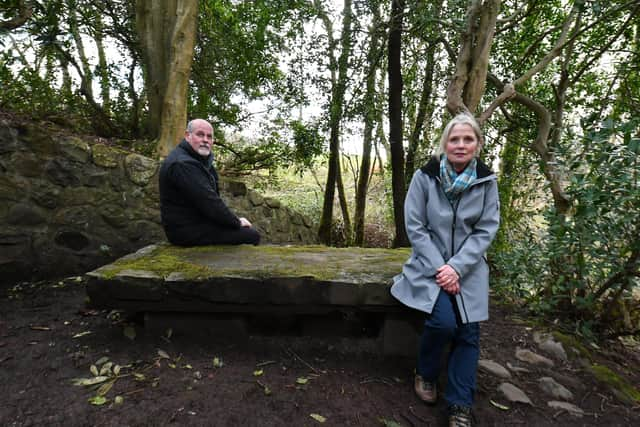Prophet's Grave: Residents suspect link between 17th-century legend and Covid pandemic
His village, now the town of Largs, was ravaged by an outbreak of what is believed to have been typhoid fever, which ended up killing Mr Smith in 1674, aged 28.
On his death bed he prophesied that his beloved hometown would forever be protected from plague and pestilence, but only if the two holly trees growing at his grave were prevented from touching.
Advertisement
Hide AdAdvertisement
Hide AdNow more than three centuries years later, and for the first time in recorded history, the trees surrounding the grave – known as the Prophet’s Grave ever since his death – have overgrown.


With their branches now intertwined as the country grapples with the ongoing Covid pandemic, the minister’s dying prophecy has created a canopy of superstition over the town.
Local resident Martin Maiden regularly visits the graveside, which is tucked away in the Brisbane Glen, about two miles from Largs.
He said the prophet’s legend, which remains largely unknown, has raised eyebrows in the town amid the ongoing health crisis.
“His prophecy was that if these holly trees grew together, which they have done, the plague would return to Largs,” Mr Maiden said.
“It’s not a pleasant thought, but perhaps recent events might add some credence to it.”
Coins have also been thrown onto the gravestone, adding to the feeling of superstition among visitors to the glen.
Neighbour Valerie Campbell, who owns the land surrounding the grave, said the plot was gifted by her father-in-law John D Campbell to the Business Club of Largs in the 1950s.
Advertisement
Hide AdAdvertisement
Hide AdThe club made a path to the grave, erecting a bridge over the burn to get to it. A seat was also placed near for visitors to rest.
Speaking about the minister, Mrs Campbell said he was a well-respected man who took his congregation out of the village during the plague to keep them safe from the disease before he died from it at Middleton Farm where he was nursed and where she now lives.
"There are a lot of people in Largs, especially the incomers, who don’t know about the Prophet’s Grave,” she said.
"It’s a beautiful walk to the grave. I would thoroughly recommend it to anyone.”
The stone’s engraving has eroded, but there is a plaque behind it with the original text reading: “Heir layeth M William Smith, minister of Larges, a faithful minister of the gospell, removed by the pestilence 1647.
"Conditus in tumulo hoc jaceo juvenisque senexque; nempe annis juvenis, sed pietate senex, Divino eloquio, coelestia dogmata vidi abstersi tenebras, mentibus, ore tonans. Altoniloque haesit animo per vera malorum colluvies, verbis improba facto meis. Renewed by James Smith, his nephew, in the year 1710. Renewed 1760.”
While local residents, including Mrs Campbell, believe the grave should be maintained by North Ayrshire Council, it remains unclear as to whose job it is to cut back the overgrown trees.
A spokesman from the council said its groundsmen were expected to carry out basic weeding and litter picking in the area, but maintaining the trees was down to the landowner.
Advertisement
Hide AdAdvertisement
Hide AdBut even if the Campbells were to cut back the branches now, is it too late?
A message from the Editor:
Thank you for reading this article. We're more reliant on your support than ever as the shift in consumer habits brought about by Coronavirus impacts our advertisers.
If you haven't already, please consider supporting our trusted, fact-checked journalism by taking out a digital subscription.
Comments
Want to join the conversation? Please or to comment on this article.